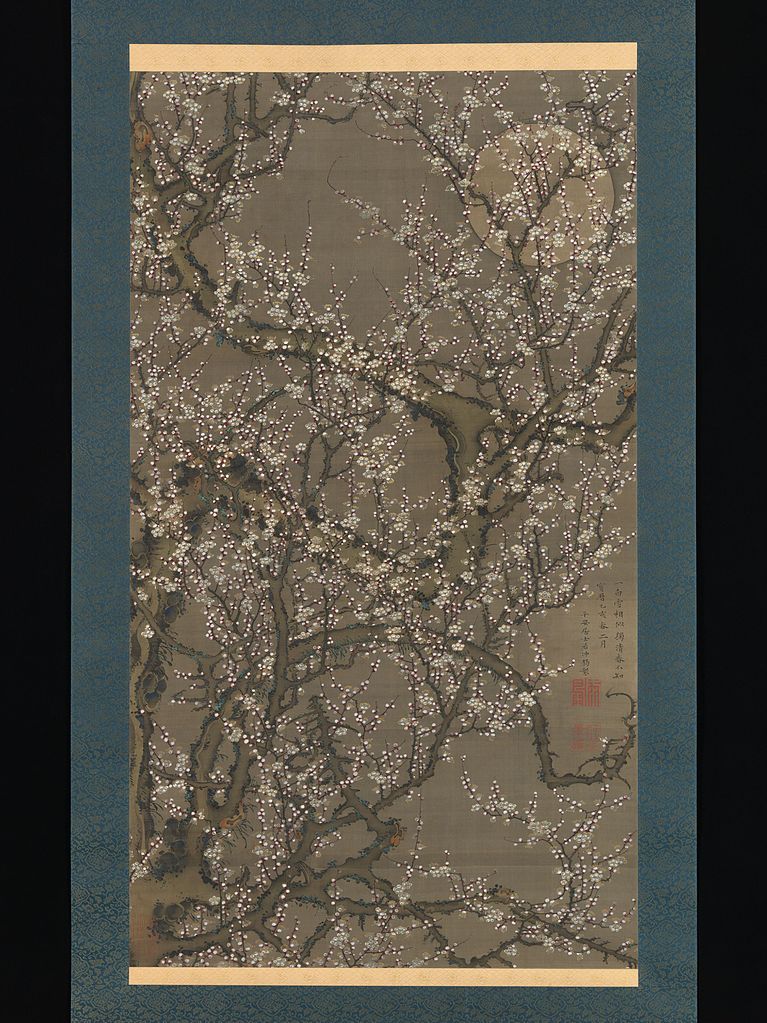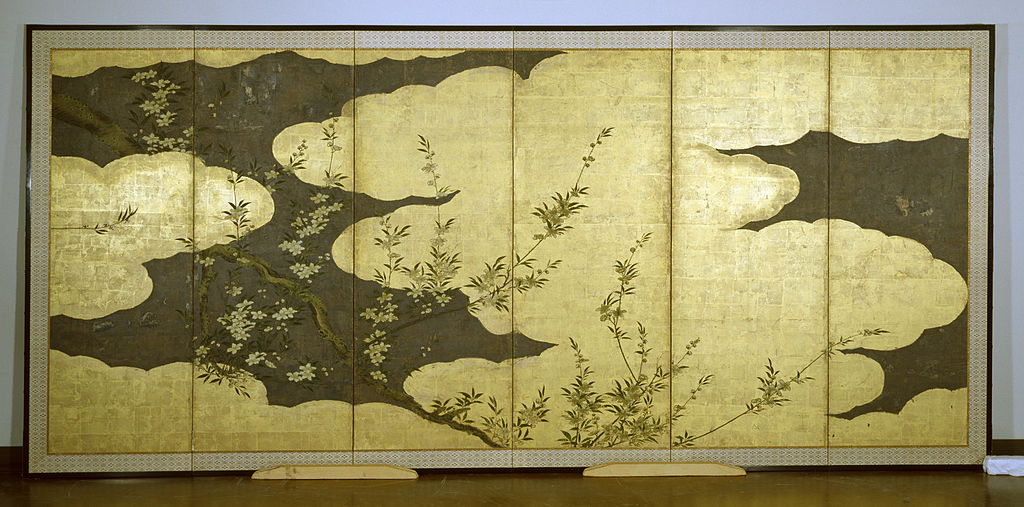
“Nothingness is the lining of the kimono, known only by the very way in which the kimono hangs, and holds its shape. One sees the lining by not seeing it, but by reading its nature from the hang of the formed kimono. This is the form of formless. The double aperture consists in the ability to read the nature of the lining from the shape or hang of the kimono; one reads the nature of the formless from the formed. To see both is to have penetrated to the identity of the lining of all that exists, as it is manifested in the uniquely individualized manifold of being. Beings are enveloped by nothingness – the universal of universals” (Robert E Carter, The Nothingness Beyond God, p 98).
Part II of An Inquiry into the Good – Reality – ends with a discussion on God. Expecting his Japanese readers to be puzzled by his frequent use of the word God, Nishida clarifies what he means in Chapter 14 – entitled “God as Reality.” Having noted that all cultures have a word for God, he observes that most people “conceive of God as something like a great human who stands outside the universe and controls it” and asserts that “this notion of God is extremely infantile” (Nishida Kitaro, An Inquiry into the Good, 80). Well, you may not think he is sitting on a cloud, but aren’t most people still looking up when talking about God?

The Judaeo-Christian conception of God as outside the world he created, with the corollary that he is ontologically different from the beings he created, arose as a reply to the question as to how the world came about: God is seen to be “the cause of the world.” But then, shouldn’t we ask: what is the cause of God? And if we instead decide that God is without a cause, we could just as well say that the world is without a cause, it has no beginning, it has always been and will always be. “If we seek God in the facts of the external world, God must inescapably be a hypothetical God. Further, a God set up outside the universe as a creator or overseer of the universe cannot be deemed a true, absolutely infinite God. The religion of India of the distant past and the mysticism that flourished in Europe in the fifteenth and sixteenth centuries sought God in intuition realized in the inner soul, and this I consider to be the deepest knowledge of God” (Nishida, Ibid, 81).
The infinite unifying power of reality latent in us
In Nishida’s eyes, any theory attempting to prove the existence of God “indirectly from without” fails to prove God “immediately in the direct experience of the self.” He then asks: “How can we verify the existence of God in facts of our direct experience? An infinite power is hidden even in our small chests that are restricted by time and space; the infinite unifying power of reality is latent in us …. The infinitely free activity of the human heart proves God directly. As Jakob Boehme said, we see God with a “reversed eye” (umgewandtes Auge)” (Nishida, Ibid, 81).
When he looks within, Nishida sees God as “infinite power,” and he calls this power, “the infinite unifying power of reality” present in our heart, and this “infinitely free activity of the human heart” is the experiential evidence of God’s presence, or rather, God’s activity, within us. This is what is usually called “spirit” in both East and West, the inner sense of being moved from within to love and act, as if borne by a sort of energetic flow sustaining our lives. In the West mystics tend to see spirit as coming from a transcendent God, in the East it is seen as the source of life and the “ten thousand things.” It infuses and sustains all things, animate and inanimate. Nishida says it is the base of reality. It is close to the Chinese notion of Dao as both source and flow of energy, a reminder that Buddhism, especially that of Chan/Zen schools, absorbed Daoist insights which it found congenial to its own.
“Anyone who deeply comprehends nature discerns a spiritual unity at its base. Moreover, complete, true spirit is united with nature … It is an independent, self-fulfilled, infinite activity. We call the base of this infinite activity God. God is not something that transcends reality, God is the base of reality. God is that which dissolves the distinction between subjectivity and objectivity and unites spirit and nature” (Nishida, Ibid, 79).
Nishida then asks: “In what forms does God exist? From one perspective … God is all negation, whereas that which can be affirmed or grasped is not God … From this standpoint, God is absolute nothingness. God is not, however, mere nothingness. An immovable unifying activity clearly functions at the base of the establishment of reality, and it is by means of this activity that reality is established … God is … the unifier of the universe, the base of reality; and because God is no-thing, there is no place where God is not, and no place where God does not function” (Nishida, Ibid, 81).
Nishida’s entire philosophical career could be described as an inquiry into nothingness, which he first approached through what to a Western reader is a non-religious discussion on being. This led him to the concept of basho, seen as a logical nothingness – the nothingness of the universal of which all beings are instantiations and specifications: for example, the nothingness of the universal called colour, which is no particular colour, and makes it possible for there being all colours as specifications. Whenever I contrast two “things,” – for example, a mountain and a hill – I, at the same time, grasp the empty universal which unites them – here, an elevation in the landscape – which is like an “empty box” where I can put other types of elevations – massif, ridge, peak, mound, mount, tor, tump, rise, knoll, etc. God could be seen as the sum total of all these empty boxes, the ultimate empty box containing all the differentiations – or contradictories. In other words, God is the universal of universals, the unifying activity through which differentiated reality is established, the nothingness enveloping all things.
The Judaeo-Christian God, who is seen as a Higher Being, and a Creator separated from his creation by an ontological gap, cannot be part of philosophy. He is deemed to be part of a supra-sensory metaphysical world beyond the reach of our intellect. Kant asserted that noumena were unknowable, philosophy could only deal with phenomena. For Nishida, and the Far East in general, God as nothingness can be said to be the “logical” nothingness at the root of phenomena. And this “logical” nothingness is continuous with the “religious” (existential) nothingness, in the sense that only an empty self can allow phenomena to manifest undistorted by bias. Both are to be apprehended through direct experience. For Nishida there is only a difference of degree between William James’s and Henri Bergson’s experiential and intuitive apprehension of reality, and the turning inward of the Advaitic jnani and the Christian mystic – the latter is deeper because embraced from the standpoint of a fully realised selflessness, whereas the former is encountered by a spiritually untrained observer who is still struggling to achieve a genuinely pure experience. In his last work, “The Logic of the Place of Nothingness and the Religious Worldview” written only a few months before his death in June 1945, Nishida states that “religion” (which one could define as the religious practice leading to the realisation of no-mind) – envelops philosophy, though both are, for Nishida, rooted in nothingness.
“Feeling is a more subtle and delicate form of consciousness than conceptual knowledge.”
How, then, are we to grasp God as nothingness? More precisely, a nothingness that is not “mere nothingness,” but also “an immovable unifying activity,” as Nishida states above. We already know the answer: through “pure experience.” But in the context of religion, this direct experiential grasp manifests as feeling, because we are not here merely addressing the practical side of our everyday lives: we are now trying to make sense of the world as such, our place in it, and how best to live meaningfully, so we need to embrace reality with our whole selves, starting with the heart, i.e., the affective, emotional, dynamic, energetic principle within us. Direct experience then takes the form of “feeling.” “It is a common idea that feeling differs from knowledge, and that its content is less clear … The alleged unclarity of feeling means nothing more than that it cannot be expressed in conceptual knowledge. It is not that consciousness in feeling is unclear, but rather that feeling is a more subtle and delicate form of consciousness than conceptual knowledge” (Nishida “Affective Feeling” Analecta Husserliana, quoted by Robert E Carter in The Nothingness Beyond God, 83)
Carter explains: “For Nishida, feeling is what is left when we imaginatively remove all content from consciousness, for when we do so we are left with “personal unity, the content of which is precisely that of feeling … It is revealed when the self is merged with its activity, and all qualities disappear in one undifferentiated awareness itself” (Nishida, “Affective feeling” Ibid, 84). We find here a similar procedure to that described in the Inquiry as pure experience. One is to return to pure awareness without losing one’s clarity of mind, which is the very goal of the Zen meditator. In the end there is just awareness, without anyone being aware, or anything one is aware of. And this “just awareness” is the Buddha (or God), it is the mind, and the self as aperture or opening.
“Thus it is that the Buddha is your own mind, and your mind gives way to your self as the place or focus of all things/experiences. Your self, as pure experience, is an undifferentiated place (basho) or arena where all things arise, except that it is not a place or arena, but an aperture or opening … To try to characterize it as anything more than an aperture or dynamic place is to lose it. It is nothing …It is formless. And the only route to an understanding of this formlessness is by the direct experience of its grasping of the myriad of forms. The awareness of forms reveals beneath these forms the formless which makes the awareness of forms possible … This self can never become a subject of consciousness, i.e., an object, but is … nevertheless, glimpsed as an awareness, as a feeling, that is, as a unity of discrete acts of awareness, or as awareness itself. … It is self revealing” (Carter, The Nothingness Beyond God, 84).

Whereas in the philosophical West the focus would be on the characterization as the clarity of form obtained under the sharp eye of consciousness, the onus here is on the feeling preceding that characterization, the intuitive in-sight which, as it were, tunes into concrete reality in order to unveil, rather than the content of the revelation. That is so because in a world of change, one has to again and again reconnect intuitively with concrete reality. Whatever view is attained cannot, and should not, be adopted as a set narrative, settled upon once and for all, to lead one’s life. Any view one becomes attached to becomes dogma, ideology, and a recipe for disaster … since it was never meant to be more that a truth glimpsed at a particular time, in a particular set of circumstances. What each of us needs to learn is not how to successfully argue to support that particular view, but to be able to return to concrete reality, and ascertain whether the view is still valid or needs to be modified or dropped. To do this, one is to use pure experience, or “feeling,” in the sense of “a more subtle and delicate form of consciousness” which is the same as realising no-mind and turning one’s self into pure awareness. “The path to an understanding of nothingness, then, is the nothingness of pure experience, i.e., the self as pure awareness.” (Carter, Ibid, 85).
Dogen’s well-known verses may help understand the process:
To study the Way is to study the self
To study the self is to forget the self
To forget the self is to be enlightened by all things
To be enlightened by all things is to remove the barriers between one’s self and others.
(Genjokoan)
To know things as they are, that is, empty of own being, one must turn inwards and look at one’s own self. As one’s own self is also empty of own being, all that one sees is emptiness, which in psychological terms would be called “forgetting one’s self” by dissolving one’s sense of ego. To forget the self is to become pure awareness, allowing things to advance towards one’s self – instead of trying to convey one’s self to them – and being enlightened by all things. One can also say that one is “actualized” by all things. As this takes place, barriers between one’s self and others break down. As one empties one’s self, one becomes all things, and one envelops all things and all beings in an embrace of love. One could say that love – or feeling – is the energetic aspect of emptiness, both in the universe where life as a dynamic flow presupposes a nothingness able to take the many forms which the dynamic flow manifests, and in one’s self where, as I become self-less, I become everything, and love as benevolence and compassion sustains my life. Nishitani wrote, in the same vein, that “in religious Love or Compassion, the highest standpoint of all comes into view.” (Nishitani Keiji, Religion and Nothingness, 281)
It is difficult for a Western reader to really grasp the idea that nothingness is not just the absence of being (which implies that there is not much it can do since it does not really exist!), but an activity, which is both the inner activity of feeling and the activity of manifestation into the world of forms. To really grasp it, one has to experience it, that is, to realise no-self: this involves meditation practice, of course, but more importantly it requires that one is really prepared to drop one’s self in one’s everyday life, a move which is closer to a loosening up than to a heroic breaking down of the ego!

“Nothingness is found underfoot, as it were, as the ground of everything in the everyday world … Nothingness … is the condition of the possibility of everything. But not only is it the condition of the possibility of everything, it is only knowable in the phenomenal world of experience as every thing. Each and every thing is an expression of (a manifestation of, a self-determination of) nothingness itself. The phenomenally real is not a creation separate from the creator, nor is it simply made in the image of the absolute. Rather, it is the absolute, expressed as the absolute expresses itself, phenomenally. Everything “is” the forms of the undivided, the formless … Nothingness is revealed in experience, but only when one is able to look through the forms at the formless of which the forms are expressions. To view a Zen garden of sand, and to see the mounds and ripples as things-in-themselves, rather than as temporary forms of the underlying oneness of sand, is to miss the point” (Carter, The Nothingness Beyond God, 86-87).
Things as forms not only point to the nothingness of ultimate reality of which they are manifestations, or expressions – in logical terms, specifications or instantiations – but they themselves are nothingness, so they are at the same time relative as determinated by nothingness, and absolute as nothingness themselves. This is soku hi, “the absolute identification of the is, and the is not” (Carter, Ibid, 58).

Unlike a God understood in substantial terms as a being, “nothingness does not create the world as forms, but is the world of forms, for forms are the self—expressions of, and thereby the self-revelations of, the formless … no special revelation or moment is privileged, for “every single moment of infinite time has the solemn gravity that these privileged moments possess in Christianity” (Nishitani, quoted by Hans Waldenfels, Absolute Nothingness, 111). The secular has taken on the fabric of the sacred, and to use that fruitful image of Nishida’s … it is like the deep and precious pure silk lining of a Japanese kimono: It is the unseen and rarely glimpsed which gives shape and ultimate meaning to the whole. The connoisseur alone realises the importance of the lining, while also recognizing that the value of the lining is best revealed by paying attention to the shape and color of the outer form of the kimono …” Ultimate Reality “is the place, itself without characteristics, ouf of which all things with characteristics arise. Nothingness is God’s face, your face, and my face before any of us were born – that is, before we were individuated” (Carter, The Nothingness Beyond God, 88).
The image of the ripples in the Zen garden of sand and that of the kimono point in the same direction as the epigram quoted in the text on Self-Contradictory Identity. In ordinary consciousness, mountains are mountains, waters are waters. After a short period of study, one sees that mountains are no longer mountains, waters are no longer waters: they are only names. When attaining enlightenment, one sees that mountains are again mountains, waters are again waters, but in a different way: one now sees them as “lined with the depths of nothingness” (Carter, Ibid, 75) through the double aperture of being and nothingness, not as two distinct perspectives, but as two necessarily associated aspects, since being and emptiness as like two sides of a coin, inseparable. Buddhism says that one sees things in their “suchness,” or “thusness.”
When Nishida speaks about God, he usually means nothingness. Only in Nishida’s last essay, “The Logic of the Place of Nothingness and the Religious Wordview,” where he deliberately uses Christian terms, does he, at times, also use the word in the more restricted sense of “creator.” One can also say that “Nothingness is beyond God,” as Carter does, taking God in the sense of the first being arising out of nothingness. This interpretation follows the gist of Meister Eckhart’s positing of a Godhead as nothingness above, or before, God as Creator. Eckhart’s thesis is the closest the West got to the notion of nothingness as source of being. Predictably, the Church quickly suppressed the idea, Eckhart was accused of heresy, and his sermons were withdrawn from public circulation. Thomas Aquinas’ synthesis between Aristotle and Christianity was adopted instead, bringing Christian thought securely under the yoke of Greek metaphysics.

(first half of 17th century)
